We knew Santa Fe would be a busy urban destination for us, filled with museums, historic buildings, and lots of different art offerings. But before arriving I don’t think we really appreciated just how much there is to see and do in this vibrant destination. In a busy 9-day stay we barely scratched the surface of all that the city offers.
Georgia O’Keeffe Museum
One of our first destinations in Santa Fe was the museum devoted to the work of the incomparable Georgia O’Keeffe. The museum is fairly small, and we finished our tour in under an hour — including time waiting for other visitors to move out of the way in this surprisingly crowded little venue. At the same time the collection is quite extensive considering it is almost exclusively focused on the work of one artist. Since O’Keeffe holds the record for the highest price paid for a work by a woman artist at over $40 million, it’s pretty remarkable that a single museum holds almost 150 of her paintings plus drawings, sketches, sculptures, and more. We’ve seen O’Keeffe works in the collections of many other museums, but here the highlights of the museum were priceless (but not commercial) works showing her development as an artist. It was very cool to see works she did as a teenage art student and those from early in her career as she was developing her modern sensibility. Interactive digital consoles showing pieces from her sketchbooks allow visitors to peek into her plein air creative process. The museum has examples from all the major phases of her artistic life, including New York skyscrapers, early abstract pieces, early botanicals, New Mexico scenes, and late in life botanical works. We also enjoyed seeing “behind the scenes” displays on subjects like how she designed minimalist frames for her modern paintings and how she turned a two dimensional visual motif of ram’s horn circling the eye socket into a monumental three dimensional spiral sculpture.
New Mexico Capitol Building
Santa Fe is the state capital — the highest elevation state capital in the US, in fact — and has one of the most unique state capitol buildings. Designers of important public buildings typically incorporate significant historical motifs into their designs to reinforce the grandeur and meaning of the building. In many US capitals, including Washington, DC, the architects of the seats of power have highlighted the Classical Greek origins of democracy by incorporating Greek stylings like elegant columns. I guess the message is “See the columns? Democracy obviously lives here!!!” The architect of the New Mexico state capitol went in a totally different direction, looking to Native American symbols and styles for most important public building in the state. The Roundhouse, as it is known, is officially based on the Zia sun symbol seen on the New Mexico state flag and is basically a giant kiva. This modern (1966) building was so different from the historic structures in the downtown that we definitely wanted to check it out (link to visitor info here).
The Capitol provided us with several surprises; some were small, some were big. The first surprise is that there was no security screening to enter the building. I can’t remember the last time I entered a government building of any sort (even boring office buildings that are home to regulatory agencies most people have never heard of) without having to go through a metal detector and send my bag through an X-ray machine. Here, we just ambled in off the street and started checking out the building.
The second surprise was the absolutely incredible art on display (for free!) throughout the building. There was an art show on display on the rotunda level focused on books as art, books made into different types of art, artwork made into books, and art inspired by books. But that was just the beginning of the art experience in the capitol building.
The New Mexico Capitol Art Collection is enormous, and it is displayed throughout the building. It is hard for me to express just how much art is packed into this building. The photos don’t really do justice to the overwhelming volume of the works. Every wall has art. Every hallway has art. Every waiting area is full of art. Heck, even some of the furniture in the waiting areas was great art!
At my last workplace in Miami, several of the partners were significant collectors of contemporary art and didn’t have room in their homes to display their entire collections. As a result, our walls were full of cool pieces on loan from various partners, including several monumental pieces that it’s hard to imagine fitting in any sort of residential setting. So I know firsthand how satisfying it can be to have a workplace that’s full of art, but the density of works in the New Mexico Capitol was beyond anything I have ever experienced. It was a complete contrast to the typically sterile government buildings I have visited in the past. It was so powerful to see such a marvelous collection that is not only easily available to the public, but also owned by the public as an investment in the art community of the state. The only downside of this amazing collection, I suppose, is that it competes with the other museums in town. After spending several hours enjoying the public art collection in the Capitol, we had no desire to visit the New Mexico Museum of Art a few blocks down the road.
Sacred Spaces
Santa Fe was founded in 1607, and starting in 1610 it was the capital of the New Mexico province of New Spain (Mexico). With such a long history of being an important administrative center, the city has a large number of historical sacred spaces. We visited only a handful of these, but each was interesting in its own right. The San Miguel Chapel was initially constructed before 1626 and claims to be the oldest church in the US. Because adobe structures must constantly be refreshed and maintained, the building has changed shape over the years but remains in its original location. There are glass inserts in the wooden floor of the altar that allow visitors to see the original adobe altar foundations from the 17th century. The Loretto Chapel was built in the late 19th century as the chapel for a girls’ school and has a distinctive neogothic style which really stands out among all the adobe structures.
The 19th century Cathedral Basilica of St. Francis of Assisi is the primary church of Santa Fe and the seat of the bishop of Santa Fe. The Romanesque style of the building was influenced the French Archbishop Jean-Baptiste Lamy, the first Bishop of Santa Fe. The building is a very unique blend of a traditional European floorplan and facade combined with southwestern decorative styles like painted details in lieu of expensive inlay or carvings. I was particularly pleased to visit the Cathedral Basilica because the (fictionalized) construction of the building is a major plotline in one of my very favorite books, Death Comes for the Archbishop by Willa Cather.
Santa Fe Botanical Garden
Santa Fe has a botanical garden, and it offers free access through the AHS Reciprocal Admissions Program, so obviously we made a stop here. For a garden that’s more than 20 years old, the plants are surprisingly puny. I guess that’s a consequence of living in the dry southwest, where without irrigation characteristic plants like agave take decades to mature. It’s quite a contrast to our home garden in Florida, where a team of paid gardeners plus master gardener volunteers are constantly weeding and hacking down vines just to keep the place from getting totally overgrown!
While it was cool seeing foreign imports like lavender and roses thrive in this environment — using water-wise microdrip irrigation, of course — I really appreciated the fact that more than half the garden is devoted to plants that are native to New Mexico. Since this is in Santa Fe, of course there was an arresting sculpture (or three) around every corner. Also, we enjoyed finding several interesting critters hanging around the garden.
Farmer’s Market
The Santa Fe Farmer’s Market requires that vendors offer products grown/raised/made in Santa Fe, so it’s the ultimate local purchasing experience. Many of the farms selling produce are certified organic, and it seemed that virtually all vendors advertised their products as “pesticide free.” We picked up several different types of veggies that we promptly consumed; fresh picked produce is just so delicious. We spent some time listening to a local band of marimba players providing musical accompaniment. But the most entertaining part of the market was watching chile vendors roast chiles on site. Their rotating metal cage/barrel contraptions were outfitted with propane burners along the bottom, so chiles got roasted and toasted as they were rolled around in the barrels. Fresh roasted chiles were a hot commodity (see what I did there?) and lines were long to grab bags of these treats.
Pecos NHP
One day we left the busy downtown area to head to the nearby Pecos National Historic Park east of Santa Fe. The park is centered on the Pecos Pueblo, which was a large and powerful community situated at the crossroads of trade between the peoples of the Great Plains and the Rio Grande Valley. The pueblo was visited by Coronado’s army in 1540 as they searched for mythical golden cities, and a Franciscan friar was first posted to the community in 1598. The Franciscans were successful in convincing the locals to build a monumental church next to the two existing pueblo structures, so this site features an interesting mix of Native American and Spanish Mission archaeology. After spending all of 2019 in the southwest we have seen enough ruined pueblos to last a lifetime, but as usual the NPS interpretive information in the visitor center turned this into yet another thought-provoking visit.
We learned about several significant episodes in local history from the extremely informative and engaging visitor center museum. The Pueblo Revolt of 1680 was a coordinated uprising of native peoples that succeeded in driving out the hated Spanish from the Province of New Mexico for 12 years. The original mission church at Pecos was burned at this time. While the success was short-lived, it represents the only known instance of native peoples of the Americas repelling European colonizers, so the episode requires thinking about Native American history in this region in a different light. The second era that was of interest to us was the period of the Mexican-American War in the 1840s, after which New Mexico became part of the US. One might think that after centuries of being part of the Spanish Empire and then Mexico this area would resist integration into the US, but apparently local sentiment was the opposite. Santa Fe was so far removed from the central authority in Mexico City that the region had a long history of relative independence. People in Santa Fe, aware of the approaching availability of railroad service to the US east coast, already felt their economic future was tied to the US and the region transformed into a US territory relatively seamlessly.
Pecos NHP also includes the site of one of the most important western battles in the Civil War, the Battle of Glorieta Pass. We didn’t visit the section of the park where the battlefield is located but that military history adds yet another interesting dimension to this facility (our 75th NPS unit).
Santa Fe Brewing Company
Santa Fe Brewing Company is the oldest and largest craft brewery in New Mexico, so obviously we had to visit the taproom and try out the offerings. During our drive from Taos to Santa Fe we passed the Santa Fe Brewing Company Hop Farm, situated along the Rio Grande, and were surprised to learn that hops can be grown in this climate. One variety grown at the farm is actually native to New Mexico and the only North American hops used in brewing. In any case, the interesting variety of beers at Santa Fe Brewing explains how its has remained popular for decades. The main varieties that are canned and distributed are all very drinkable (like Happy Camper IPA, Nut Brown Ale, and Java Stout) but the tasting room also offered several specialty and small batch beers. Of these, a chocolate chili creation called Diplomatic Immunity and the Sunsetter Farmhouse Ale were standouts.
Museum of Indian Arts and Culture
During our stay we wanted to visit at least one of the four museums located on Museum Hill, and we chose the Museum of Indian Arts and Culture. A combination of the Museum of New Mexico and the Rockefeller-funded Laboratory of Anthropology, the museum claims to have “the most inclusive and systematically acquired collection of New Mexican and Southwestern anthropological artifacts in the country.” Whether or not that’s true, this place has more pottery than you can shake a stick at.
The main display on the cultures of the region — Here, Now and Always — has immersive elements designed by Disney Imagineers working pro bono. We enjoyed the extensive use of first-person memories to help bring cultural beliefs and practices to life. We also liked that the different cultures of the region are presented as frequently intermingling, often sharing ideas, decorative designs, and technologies, while still focusing on their areas of comparative advantage.
On the other hand, the fact that information and artifacts were presented thematically (“Canyon Cultures” or “Education”) instead of by region or chronologically or by tribe was confusing at times. Seeing Clovis arrow points and other tools made by Paleoindians next to 20th century pottery was a bit hard to digest. I thought the Millicent Rogers Museum in Taos did a better job of clearly articulating the progression of the different crafts it focuses on. Nonetheless, we still learned a lot during our visit and have a much better understanding of the forces that have shaped the Native American cultures of the region.
Tragically, photos are not permitted within the museum so here are a few from the courtyard outside:
Art, Art, Art, Art, Art
Meanwhile, in between all these destinations, we spent hours on end appreciating art throughout the city. There are interesting installations throughout public spaces like the grounds of the Capitol and small pocket parks in the city. Art galleries advertise their wares with captivating sculptures placed on sidewalks throughout the city. And of course the 100+ galleries in the Canyon Road arts district are open for perusal.
There are so many different media and styles represented that wandering the galleries was an excellent opportunity to gauge our own interests and tastes and see whether that has changed since being on the road. We liked the extensive sculpture offerings and high quality paintings at the Manitou Galleries, but their prices were eye-poppingly high. Much more affordable offerings were available at La Mesa Gallery, including crafts like pottery, fused glass, and furniture. Ken was drawn to several of the etched metal works at Mark White Fine Art, while I liked the vivid colors and bold lines at the Carole LaRoche Gallery.
The one thing that we generally didn’t like was the prices. While some works seemed appropriately priced given the scale and complexity of the work, many seemed very inflated. On the other hand, all the original and limited-print artwork we own was purchased directly from the artists, so maybe we just don’t appreciate that there is a “gallery premium” built into prices here. But it’s hard to imagine why someone would pay $2,000 for a metal yard art whirligig that can be acquired at any craft show for $250 or less. Despite the sticker shock, we thoroughly enjoyed our wanderings through various galleries, where friendly staff were always happy to answer questions and discuss the artists.
Urban Services
Being in a relatively large city meant we finally had access to the urban services we’ve been missing all summer. We were deliriously happy to visit some of our favorite places, and Total Wine and Whole Foods got a lot of business from us. The REI, conveniently located next to the farmer’s market, was a perfect place to check out potential replacement hiking shoes since ours are coming to the end of their lives. I have retired my current sun hat (purchased in 2012) after years of solid service, and REI provided an excellent selection of replacement options. We also took care of some maintenance items like new wiper blades for the truck.
During this visit we stayed at the Trailer Ranch RV Resort. It is a very well run RV park, but it’s still an RV park… where we were inches from our neighbors and where our rear panoramic view was a wall. And where we paid 4-5 times the nightly rate we typically pay at a state or national park or national forest. It was a big change from all the scenic campsites we’ve enjoyed this summer, but as everyone knows the key factor in real estate is location, location, location. Just a short drive outside the historic downtown, it was an ideal spot for exploring all that Santa Fe has to offer, and the friendly staff were incredibly helpful with recommendations and service referrals.
Despite keeping very busy during our stay, and writing a very long post about it all, there is still so much we didn’t do. We never made it to any of the three other excellent museums on Museum Hill like the Museum of International Folk Art or the Wheelwright Museum of the American Indian. We didn’t visit downtown museums including the New Mexico History Museum, the New Mexico Museum of Art, and the Museum of Contemporary Native Arts. We didn’t hike any of the excellent local trails. In other words, there is plenty to bring us back to Santa Fe in the future.
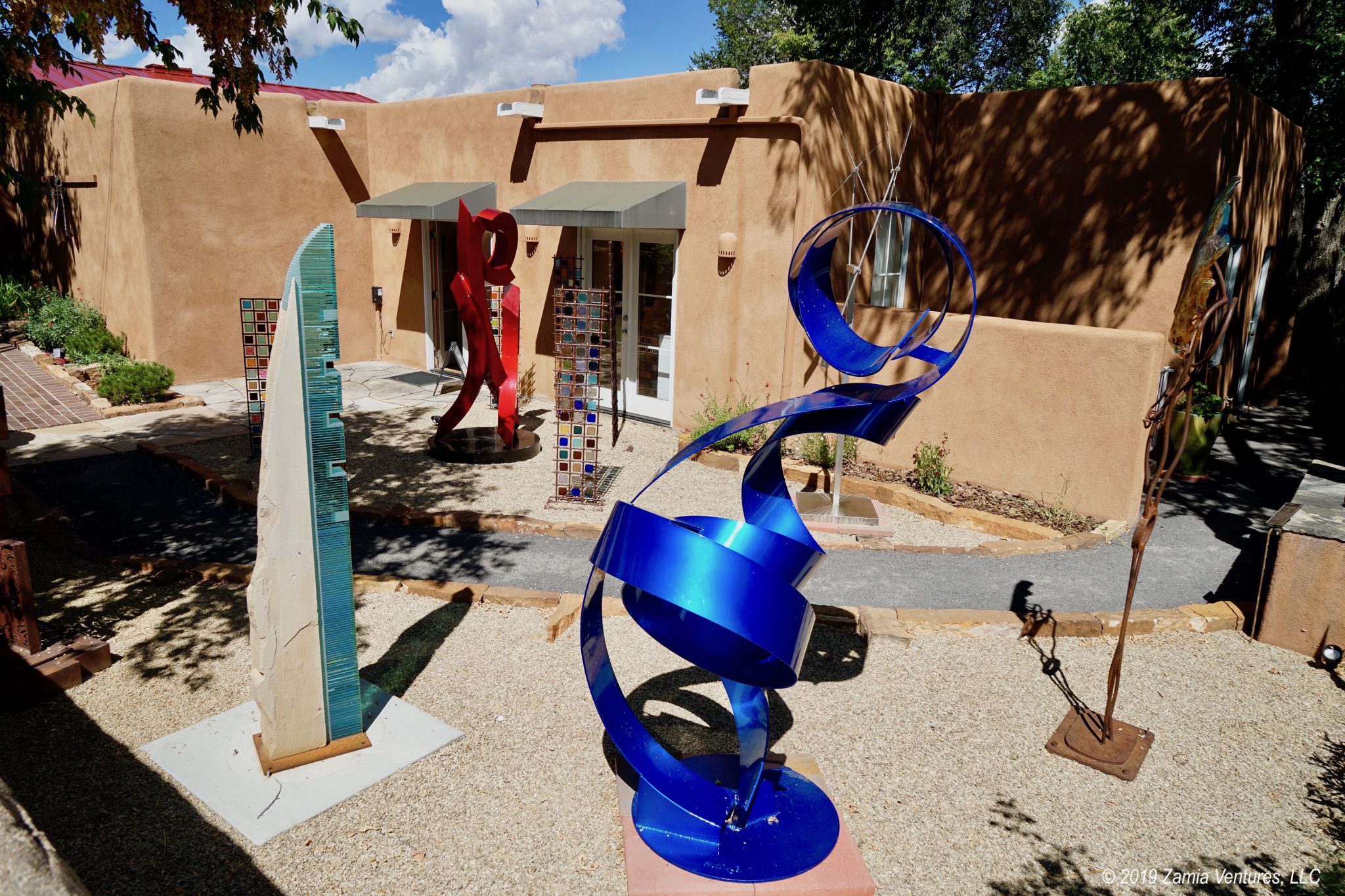
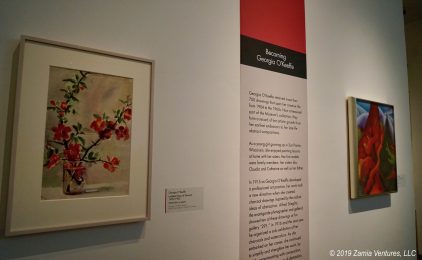
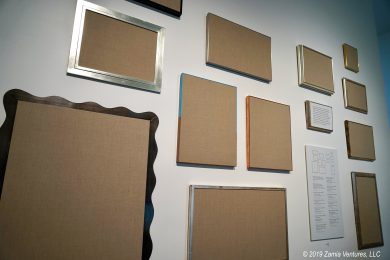
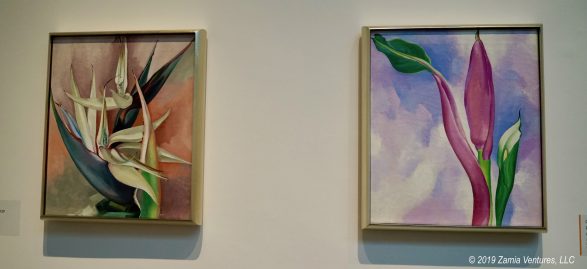
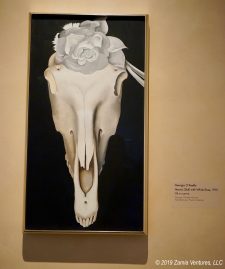
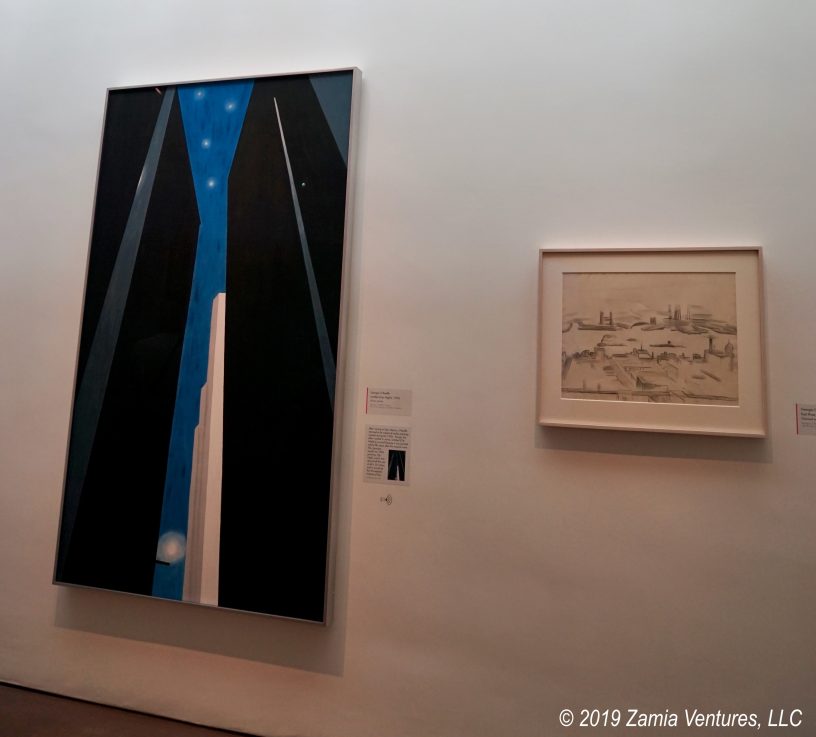
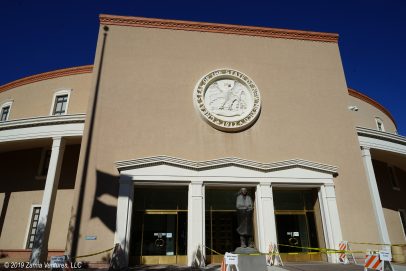
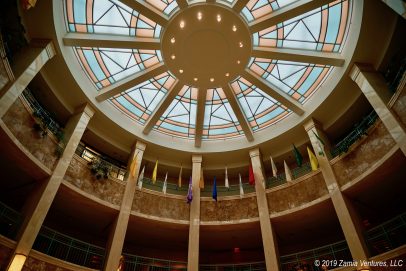
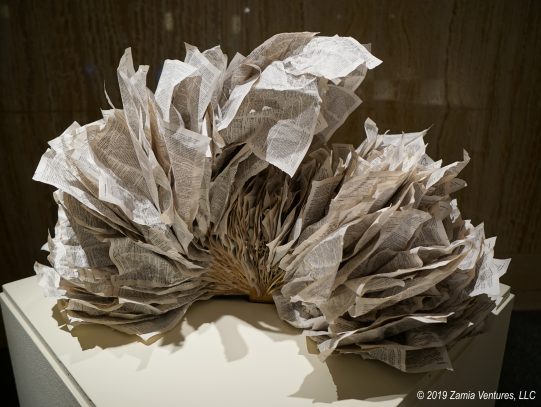
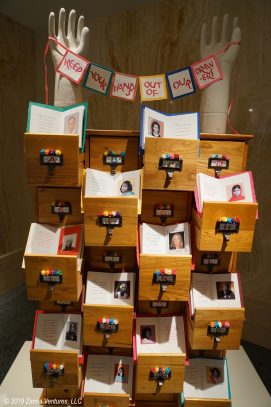
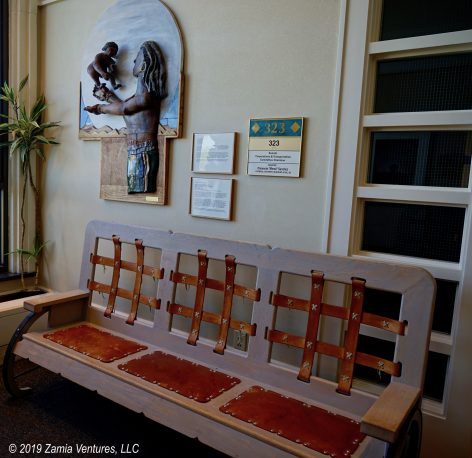
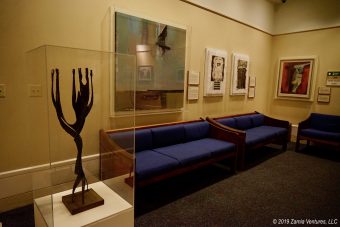
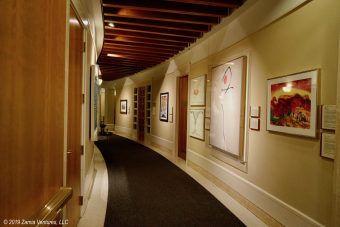
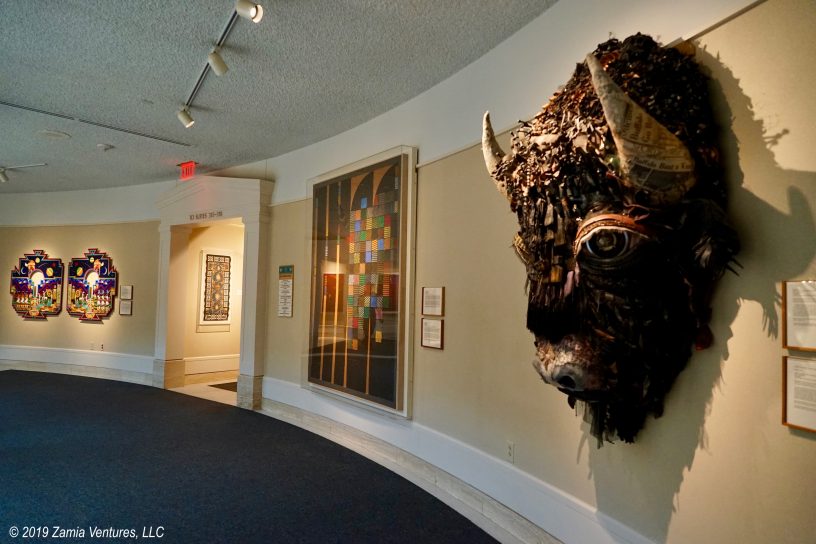
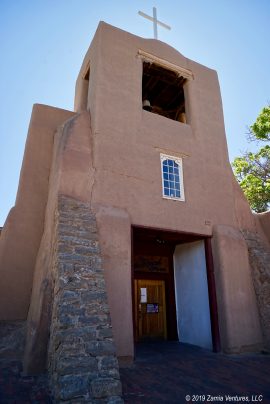
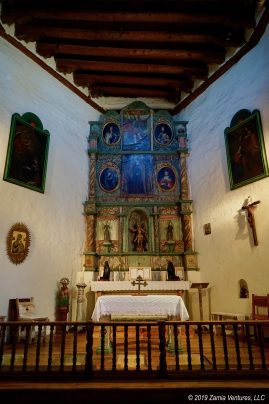
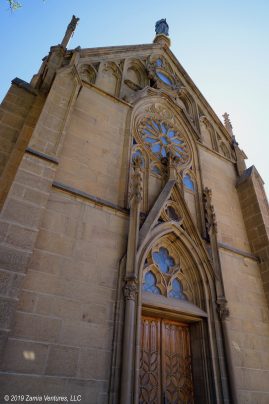
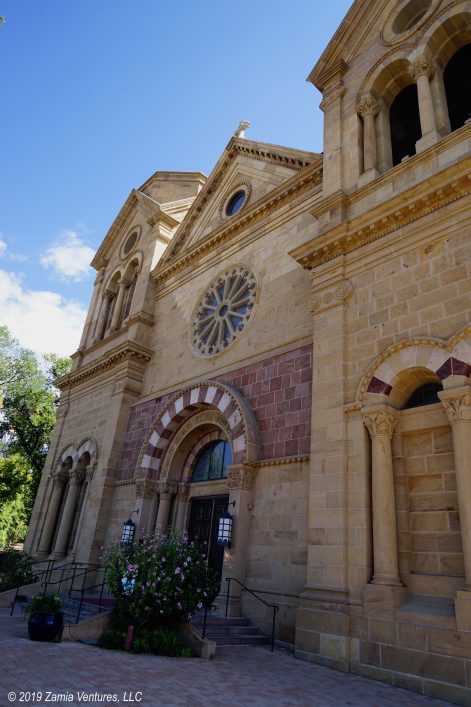
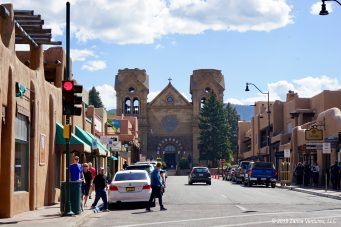
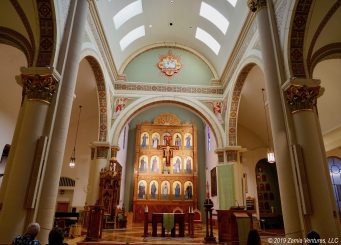
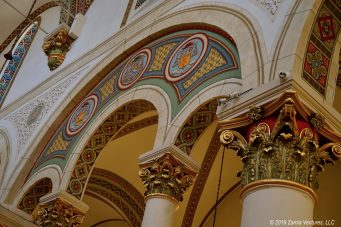
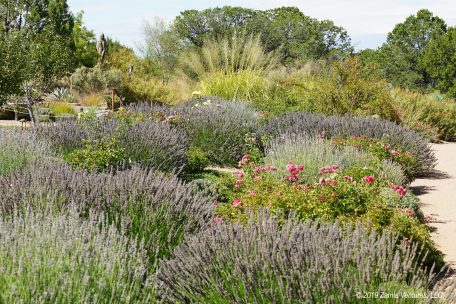
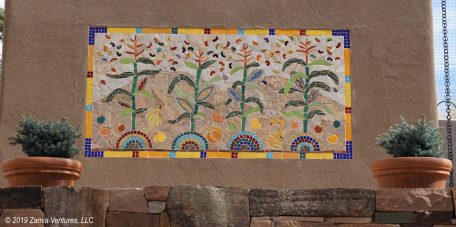
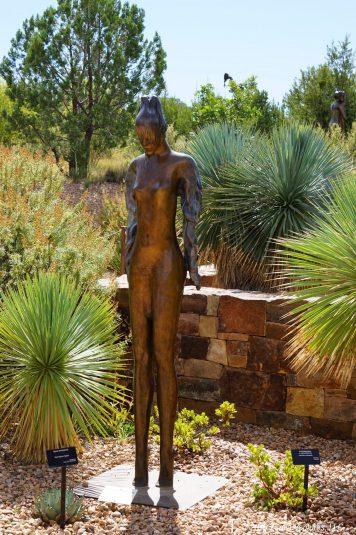
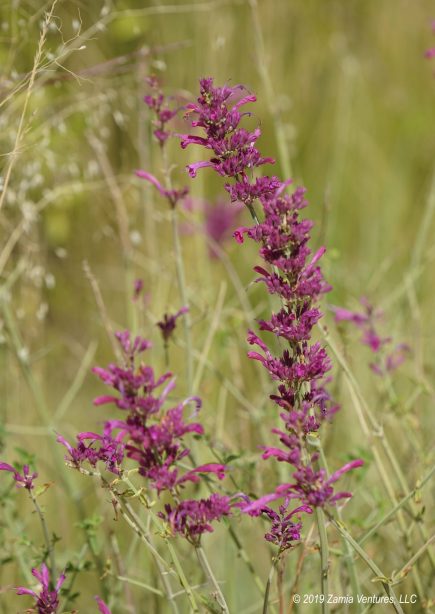
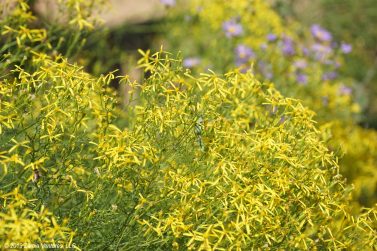
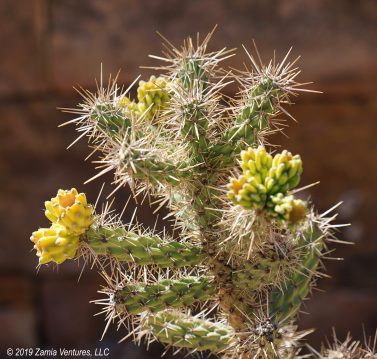
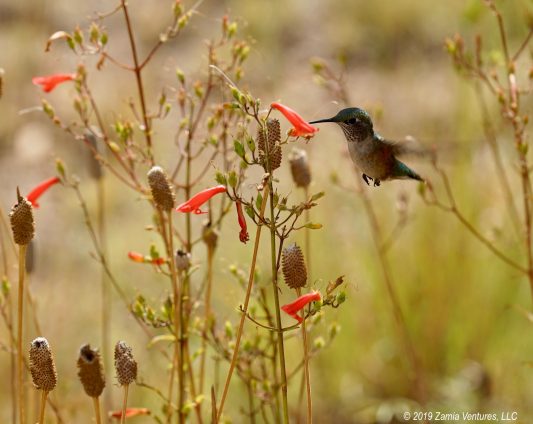
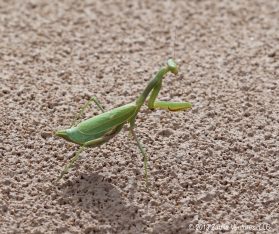
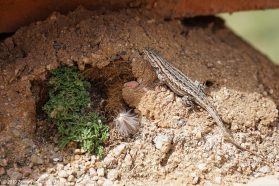
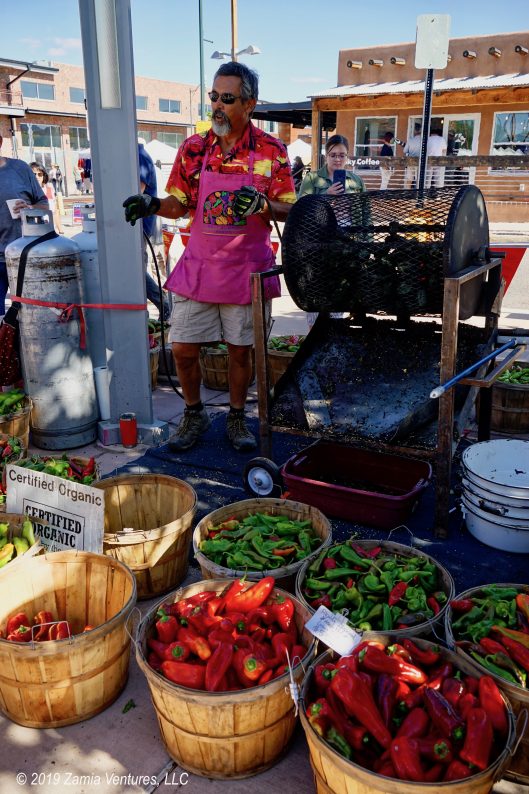
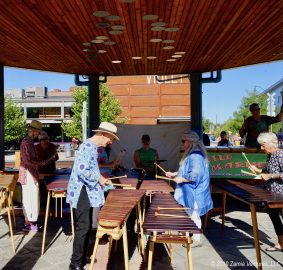

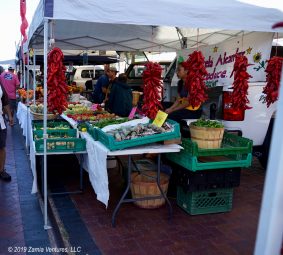
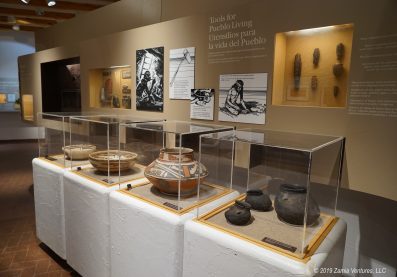
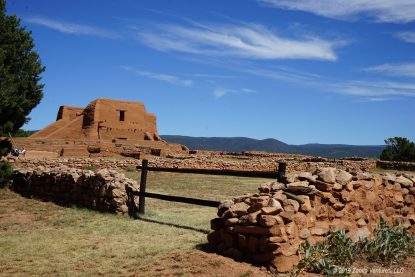
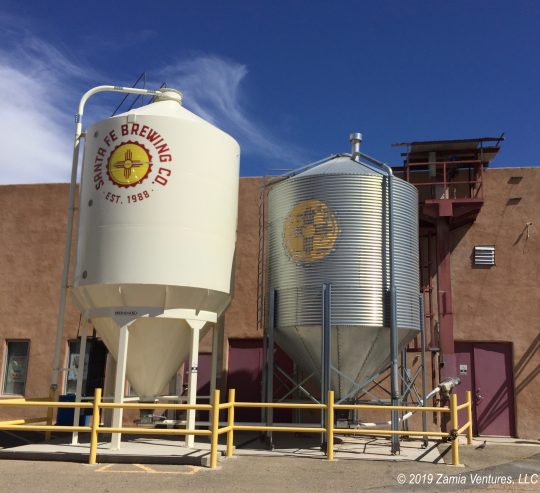
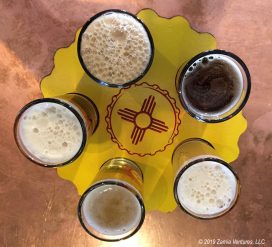
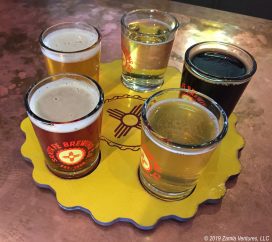
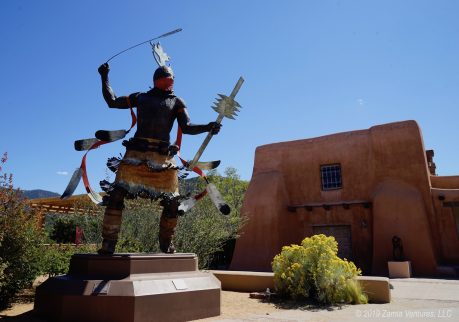
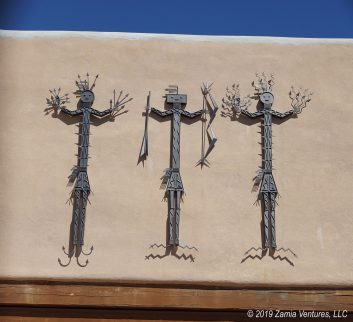
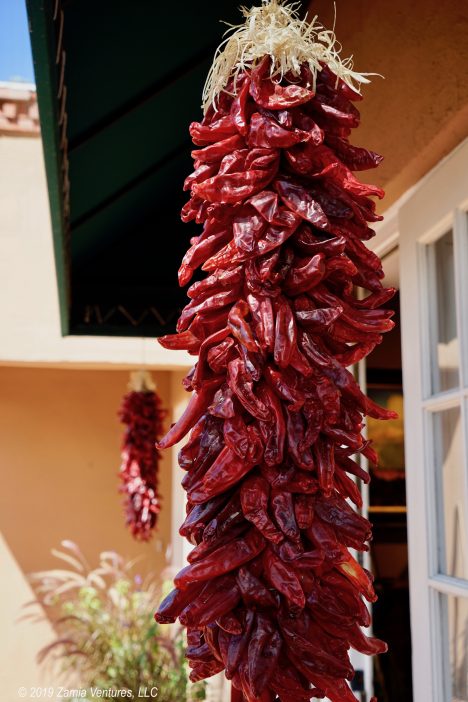
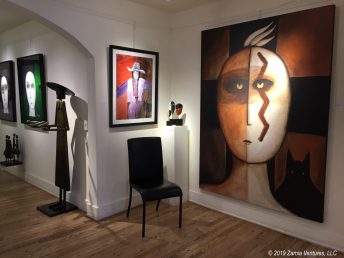
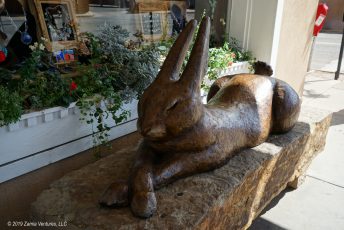
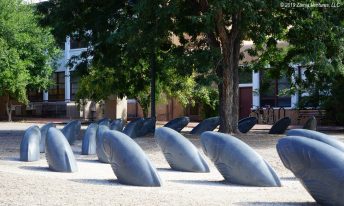
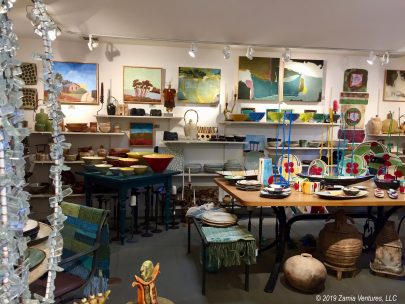
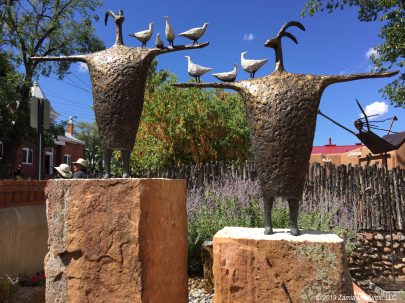
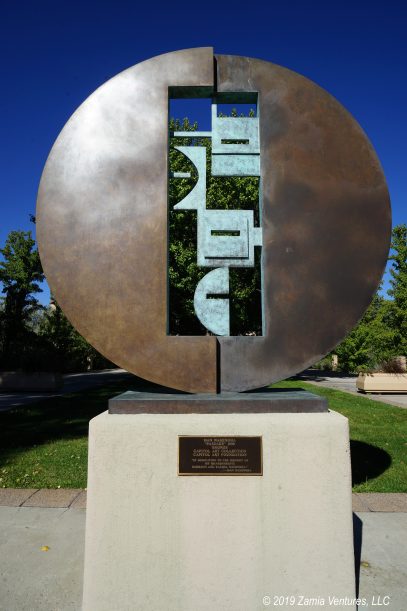
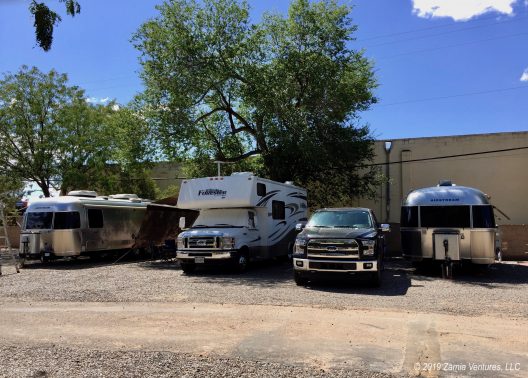
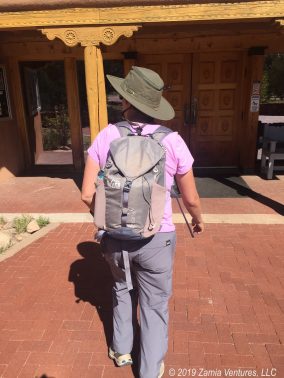
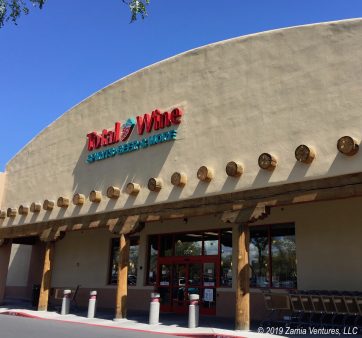
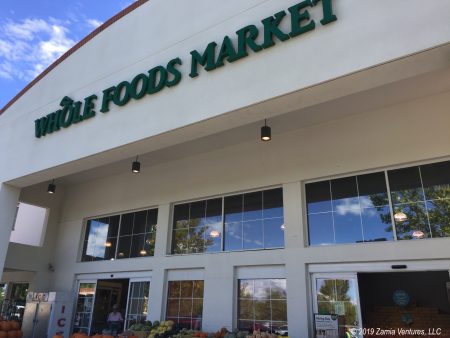
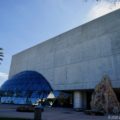
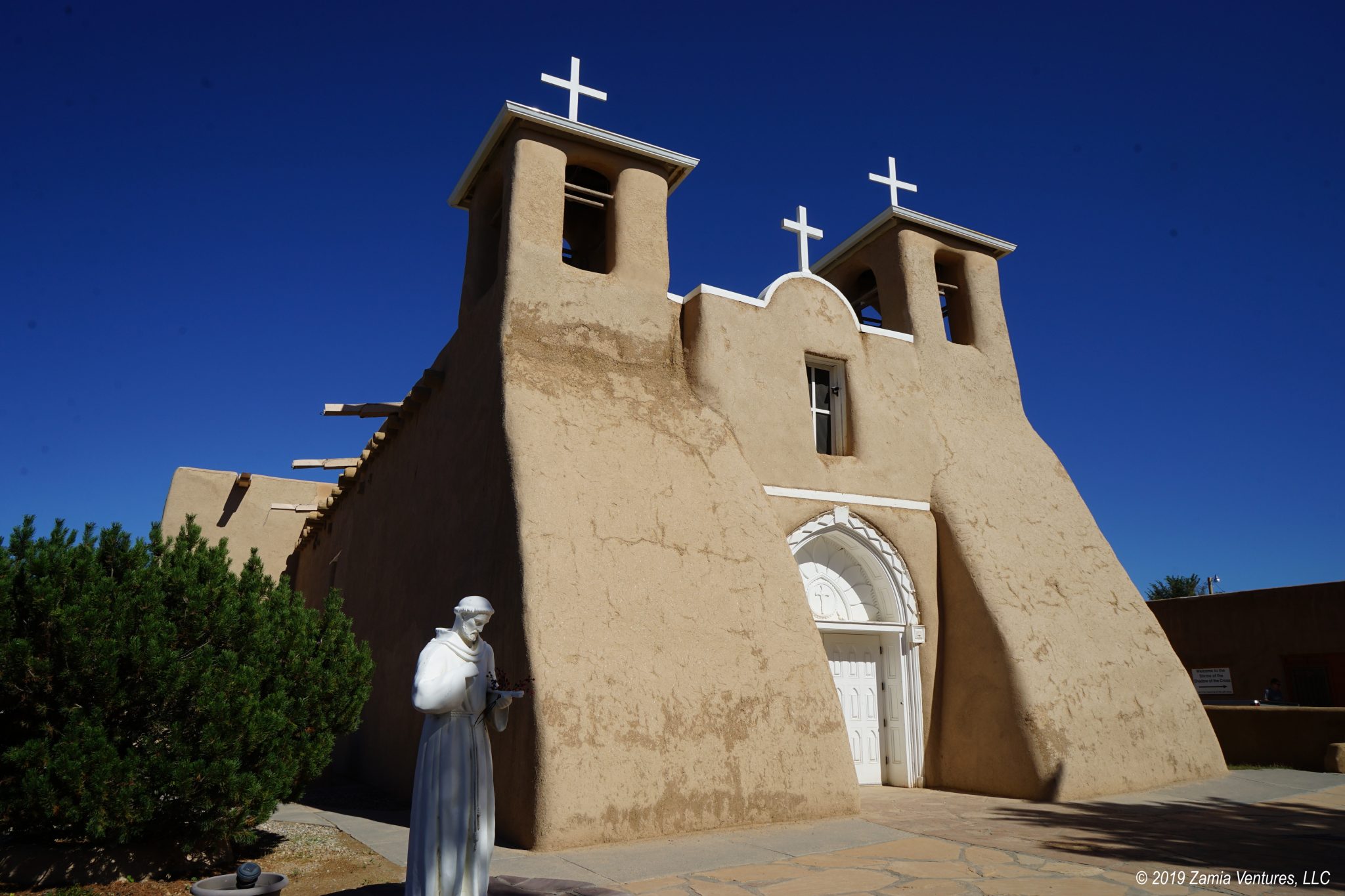
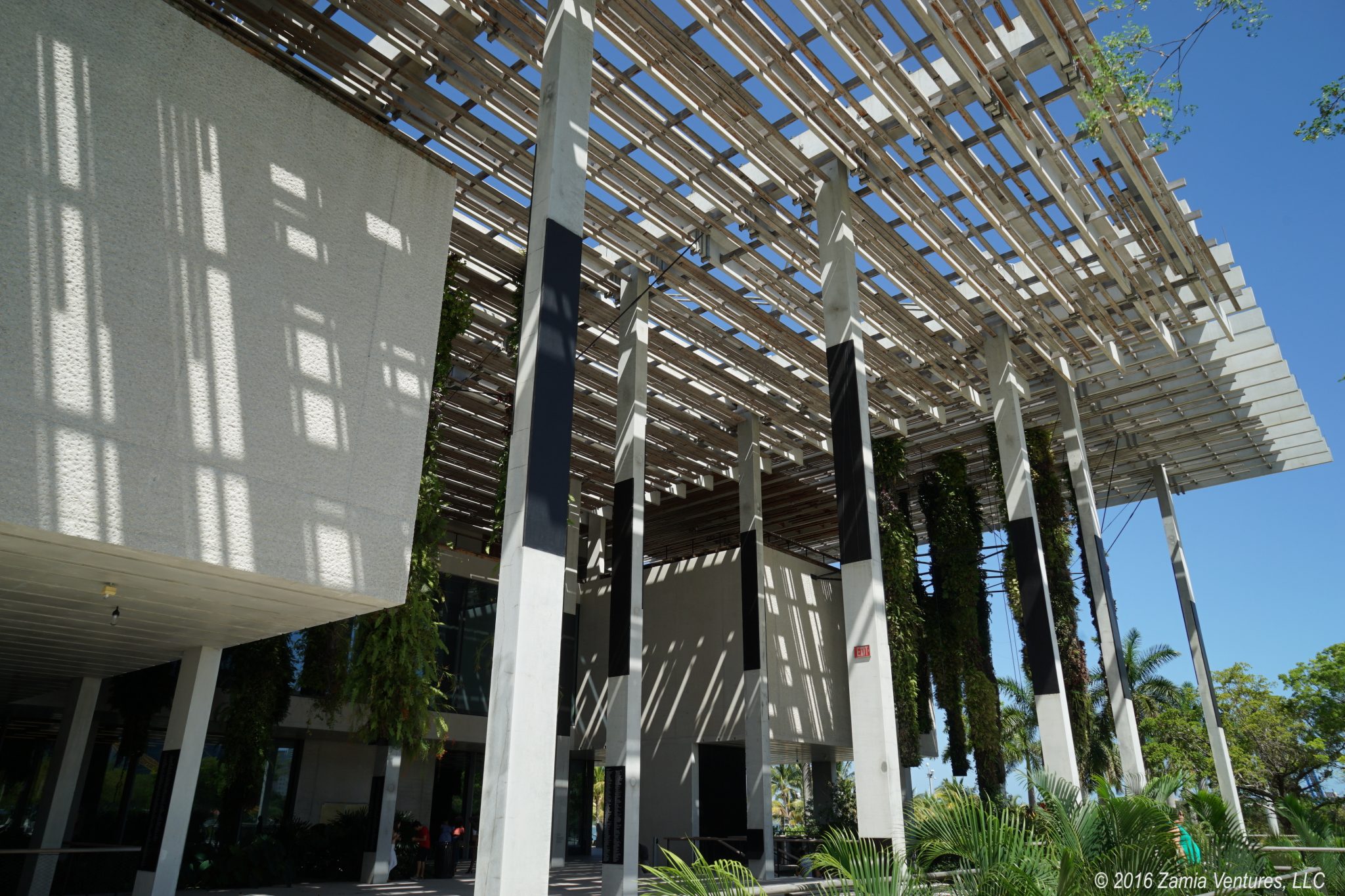
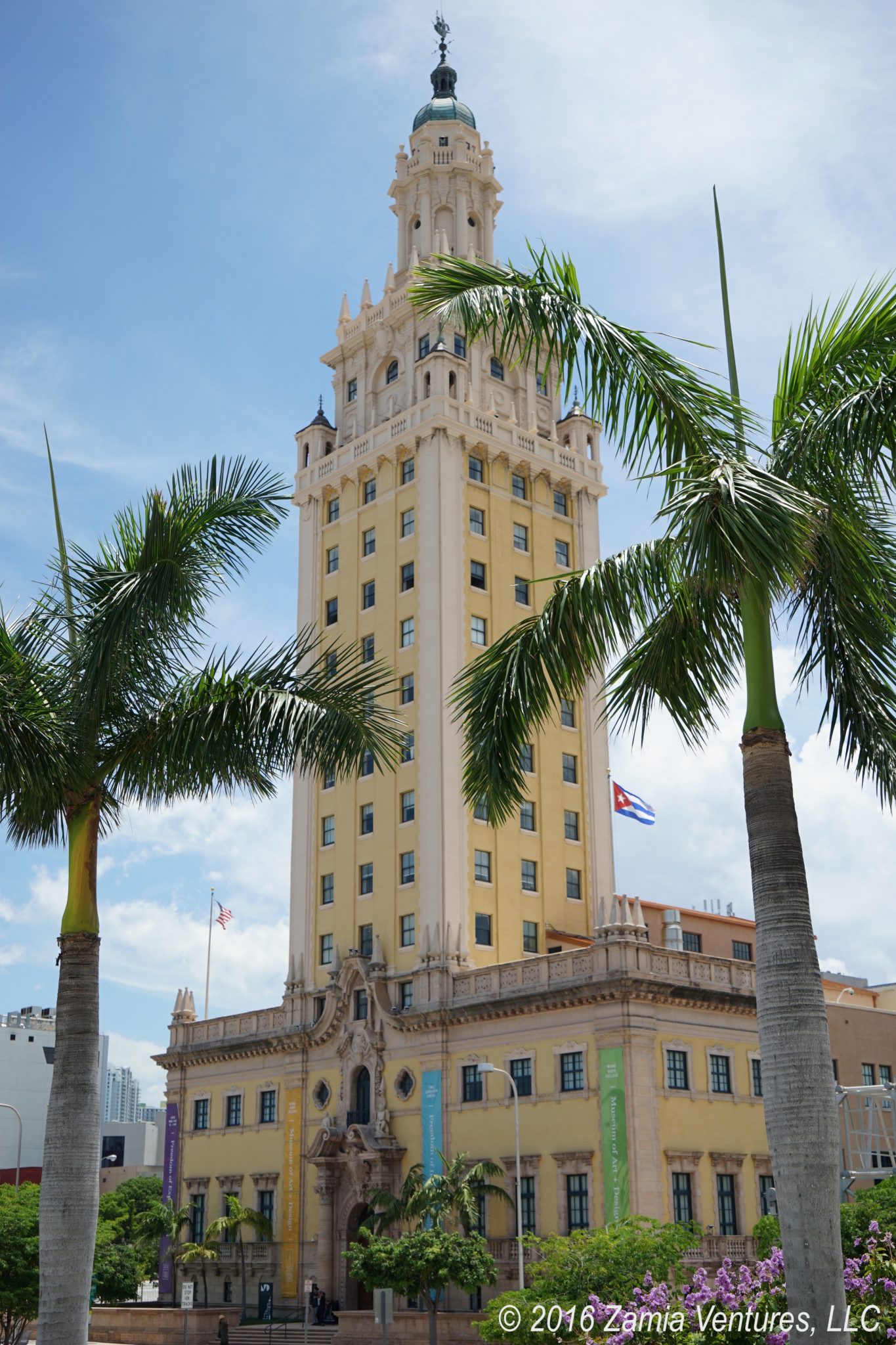
What a great blog about one of our all-time favorite places! We’ve visited Santa Fe many times and never tire of it. The culture, architecture, art, food, landscape, light…I love everything about it. Isn’t fall a glorious time to be there? That same guy has been roasting chiles at the market for years. It makes me happy to see that he’s still there.
You’ve added some interesting things to our list for our next time in Santa Fe (I can’t wait to check out the Diplomatic Immunity! Chile + chocolate is my kind of combo). I’ve always thought it would be fun to spend an entire year in Santa Fe. Or more…
The nearly perfect weather definitely made our stay even more enjoyable. It’s very hard to complain about 50 degrees at night and sunny days with highs in the 70s. It made it easy to enjoy the indoor-outdoor nature of so many places, with lovely outside gardens and patios full of sculptures. It also made it a pleasure to wander around the very walkable downtown; we might not be so cheerful doing so in the height of summer.
I need a nap after reading this. My goodness, you all stayed busy! How long were you in town?
Santa Fe is a terrific city, as this post beautifully illustrates. There’s something for everyone, it’s very pedestrian friendly, the people are nice, and while it’s touristy, it doesn’t feel fake – at least, it didn’t feel that way to us. We liked how many beautiful and interesting sites there were that were free, and you explored several we didn’t get to. The capitol is especially impressive! All that artwork and no magnetometers?? Sign me up!
I’m also jealous that you are there during prime chili pepper season. They look delicious and I can only imagine the dishes the local chefs are serving up these days. Speaking of which, that Diplomatic Immunity beer sounds like my cup of tea. Errr. You know what I mean.
Our stay ended up being 9 days, longer than expected (a story to be told in the next blog installment) but we still felt we left so many things untouched. It was a great introduction, however, so next time we can focus our efforts on the things we missed this time around.
Interesting that you were impressed by the amount of free stuff – we sort of felt the opposite, that we were constantly paying for things. Paying for parking (haven’t done that in many months!!), paying entrance fees at so many museums, paying to go into the different historic churches and chapels to see the interiors. I just chalked it up to the nature of a touristy city but for us it was an unusually expensive stay — even before I bought a fancy new hat!
Santa Fe and the surrounding area counts among our most memorable travel destinations. I am sorry you missed the Museum of International Folk Art…it is one of my favorites. And when you venture back we highly recommend hikes in Tent Rocks National Monument and at Ghost Ranch where O’Keefe painted. And for a nice escape from hiking stop at the Ojo Caliente hot springs to enjoy a dip in their private outdoor spas. We can’t wait to go back.
There really is so much to do in Santa Fe, and we barely scratched the surface…. but stay tuned for Tent Rocks photos! Thanks to our incredibly slow pace of travel we are spending even more time in the outlying areas around this city this week.
I can hardly believe there was anything you missed in town! The botanical gardens look like the place for me, followed by a stop at the farmer’s market. It’s been years since we visited there, but we have fond memories of it. It’s an easy-to-love city for sure!
Santa Fe is incredibly dense in destinations, despite its relatively small size. We will be back for another visit at some point, I am sure.